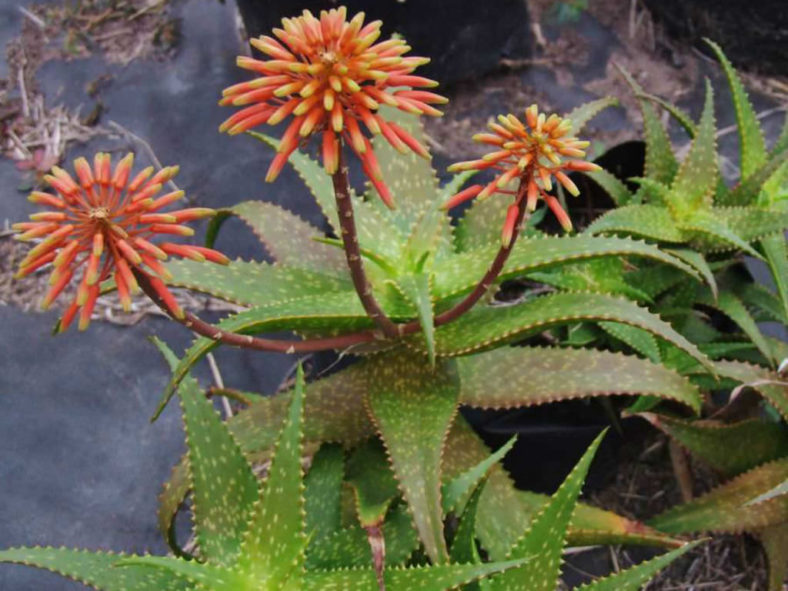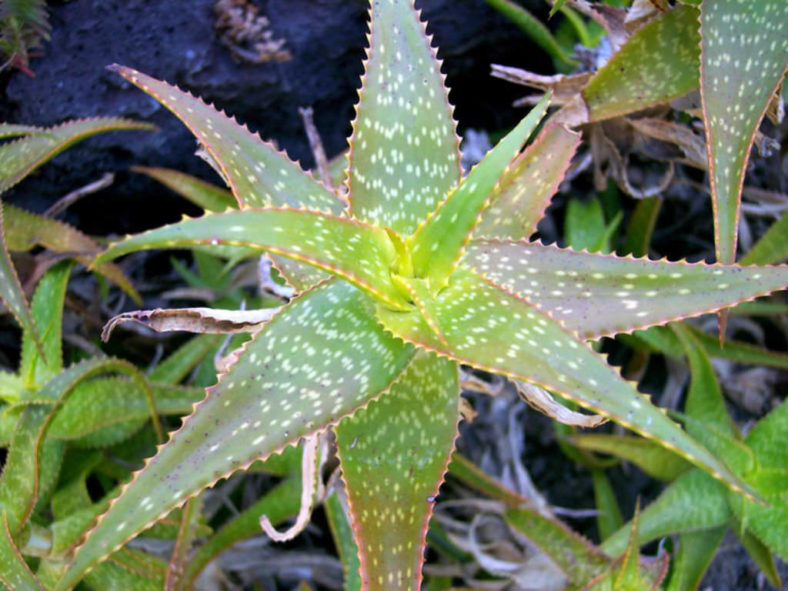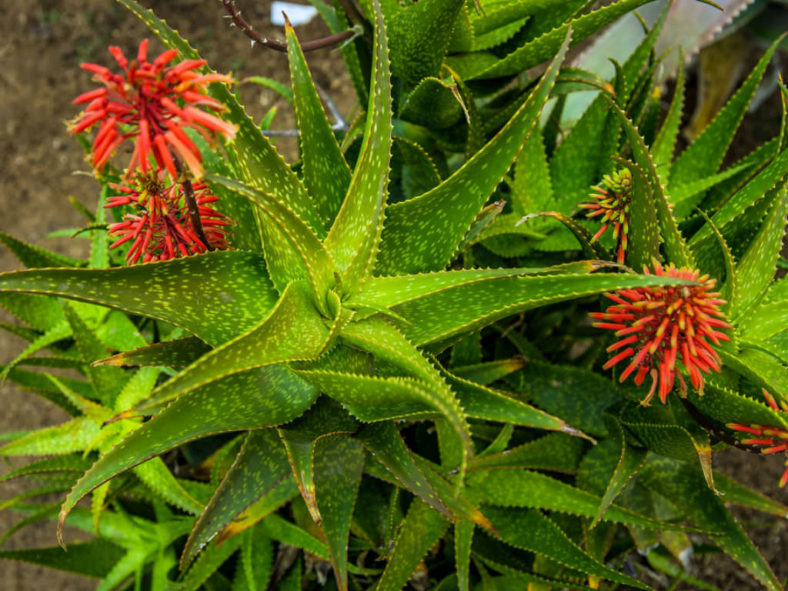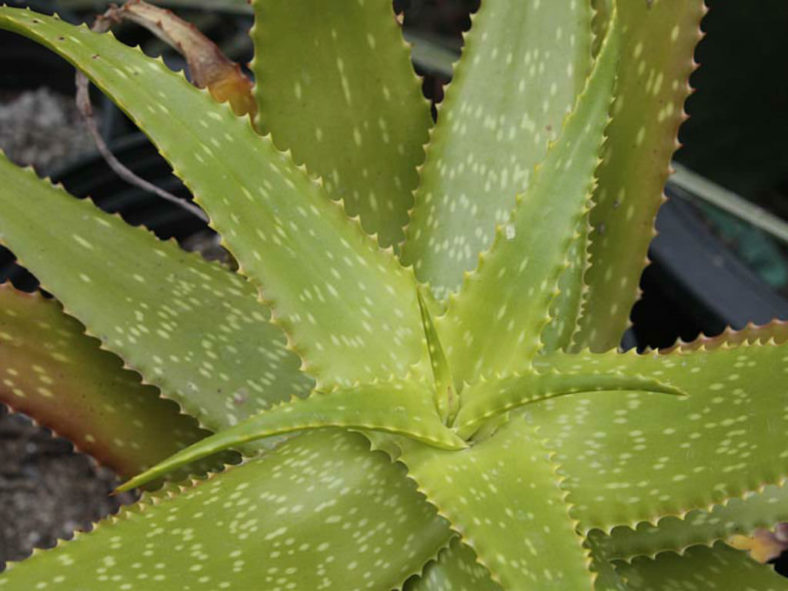Scientific Name
Aloe andongensis Baker
Synonym(s)
Aloe andongensis var. andongensis
Scientific Classification
Family: Asphodelaceae
Subfamily: Asphodeloideae
Genus: Aloe
Description
Aloe andongensis is a succulent with stemless rosettes that are always neat in appearance. The rosettes can reach up to 20 inches (50 cm) tall. The leaves can grow up to 10 inches (25 cm) long and have light spots and margins armed with sharp light-green teeth.
The inflorescence is 2- to 3-branched and can grow up to 16 inches (40 cm) tall. The racemes are attractive orange-scarlet heads with buds spreading horizontally.

Hardiness
USDA hardiness zone 9a to 10b: from 20 °F (−6.7 °C) to 40 °F (+4.4 °C).
How to Grow and Care
Aloes are very forgiving plants. However, as with all succulents, they must never be allowed to sit in stagnant water and should be carefully monitored for signs of overwatering.
Aloes are not particularly fast-growing and will only rarely need repotting. Repot plants in the spring that are tipping over their pots or have ceased growing. Use a fast-draining potting mix with one-third sand or pebbles. When repotting a larger plant, dividing the root ball carefully is possible. Some kinds of Aloe will send off off-sets that can be potted independently.
It needs intense, bright light. Once acclimated, it can withstand full summer sun. In the winter, provide bright light. It prefers warmer temperatures of 70 to 80 °F (21 to 27 °C) but will survive down to 40 °F (4.5 °C). Feed with a cactus fertilizer in the summer only. Suspend feeding in the winter as the plant goes dormant.
See more at How to Grow and Care for Aloe.
Origin
Aloe andongensis is native to Angola (Pungo Andongo in the Cuanzo Norte district).
Links
- Back to genus Aloe
- Succupedia: Browse succulents by Scientific Name, Common Name, Genus, Family, USDA Hardiness Zone, Origin, or cacti by Genus
Photo Gallery



